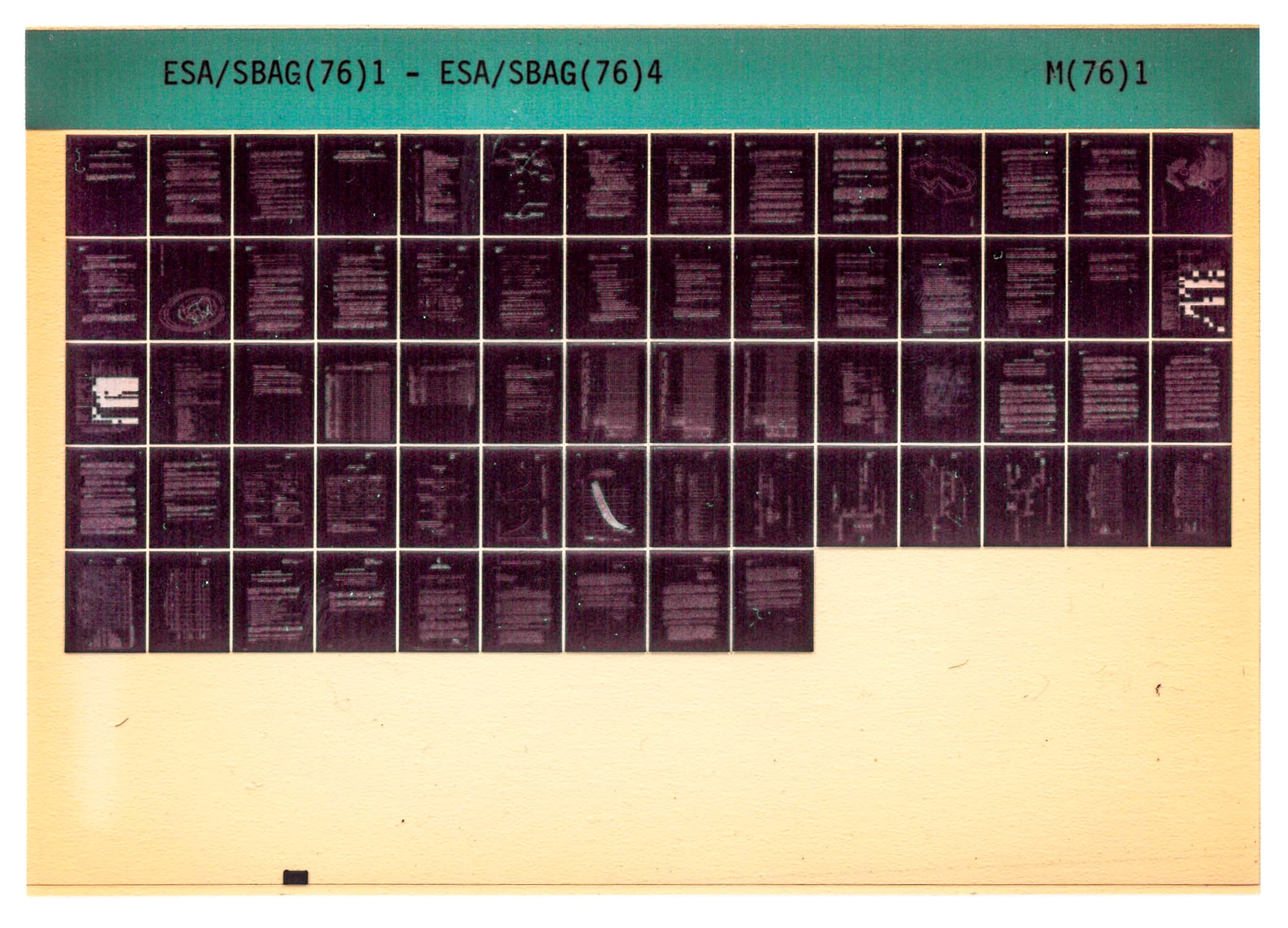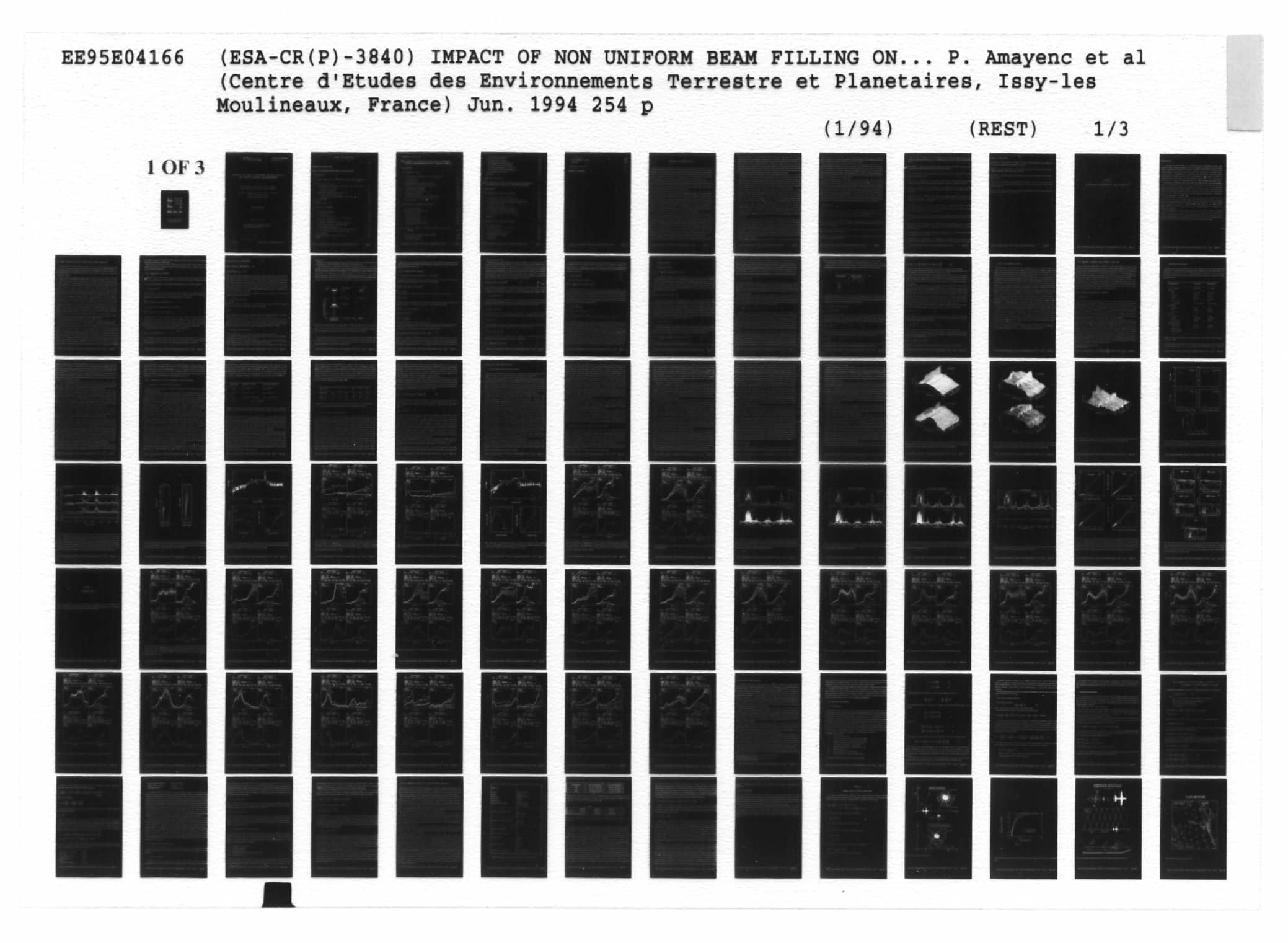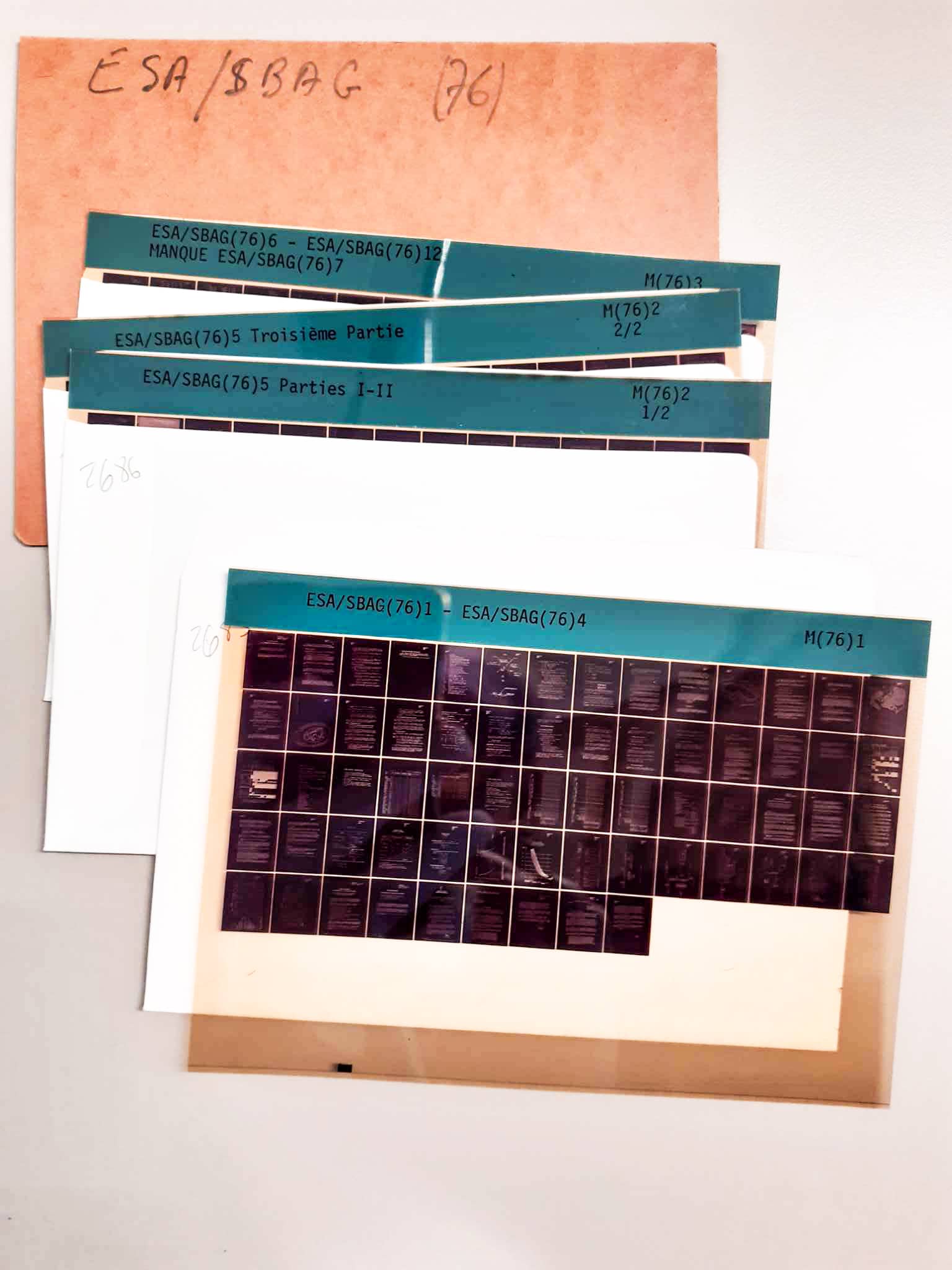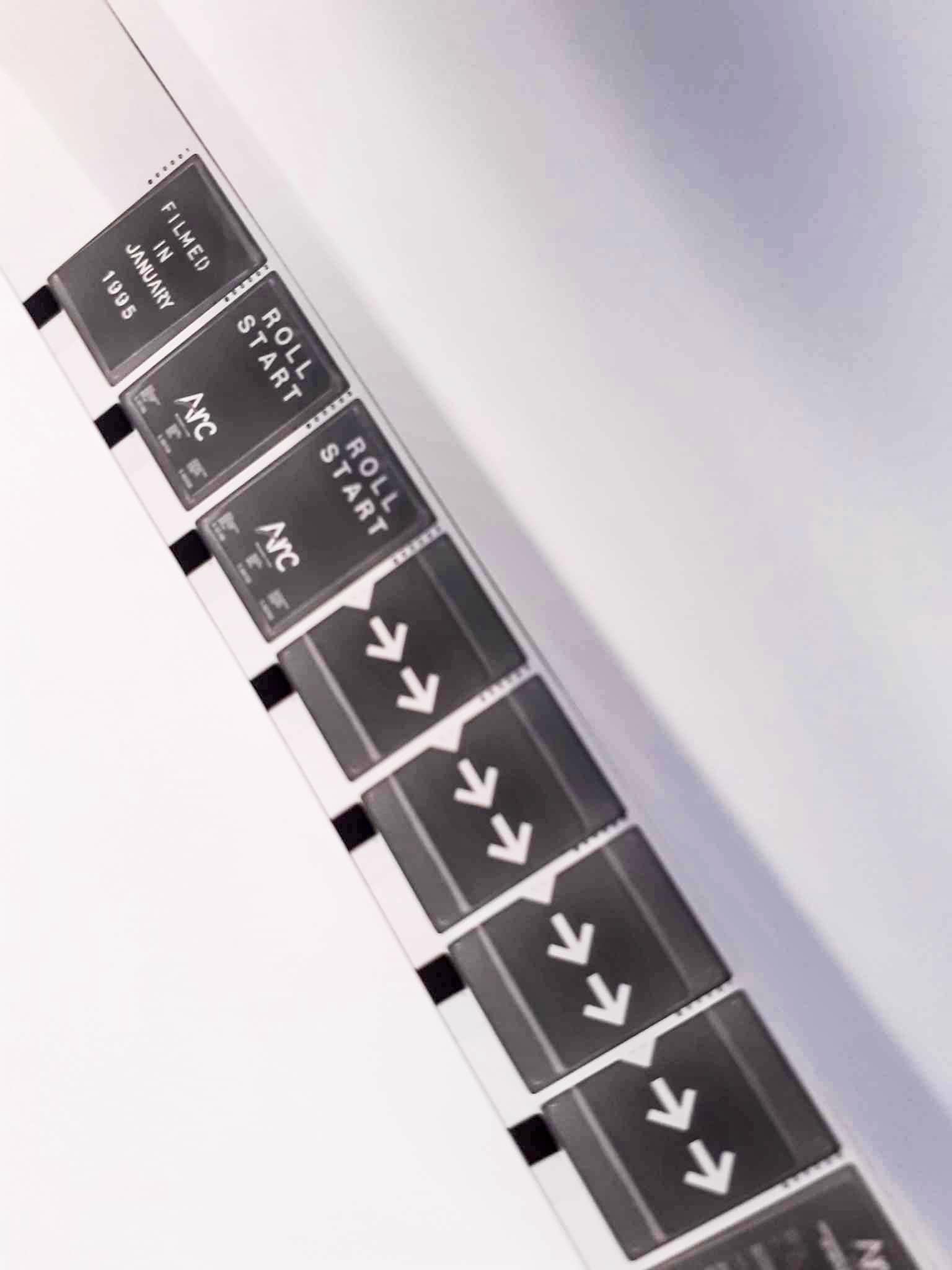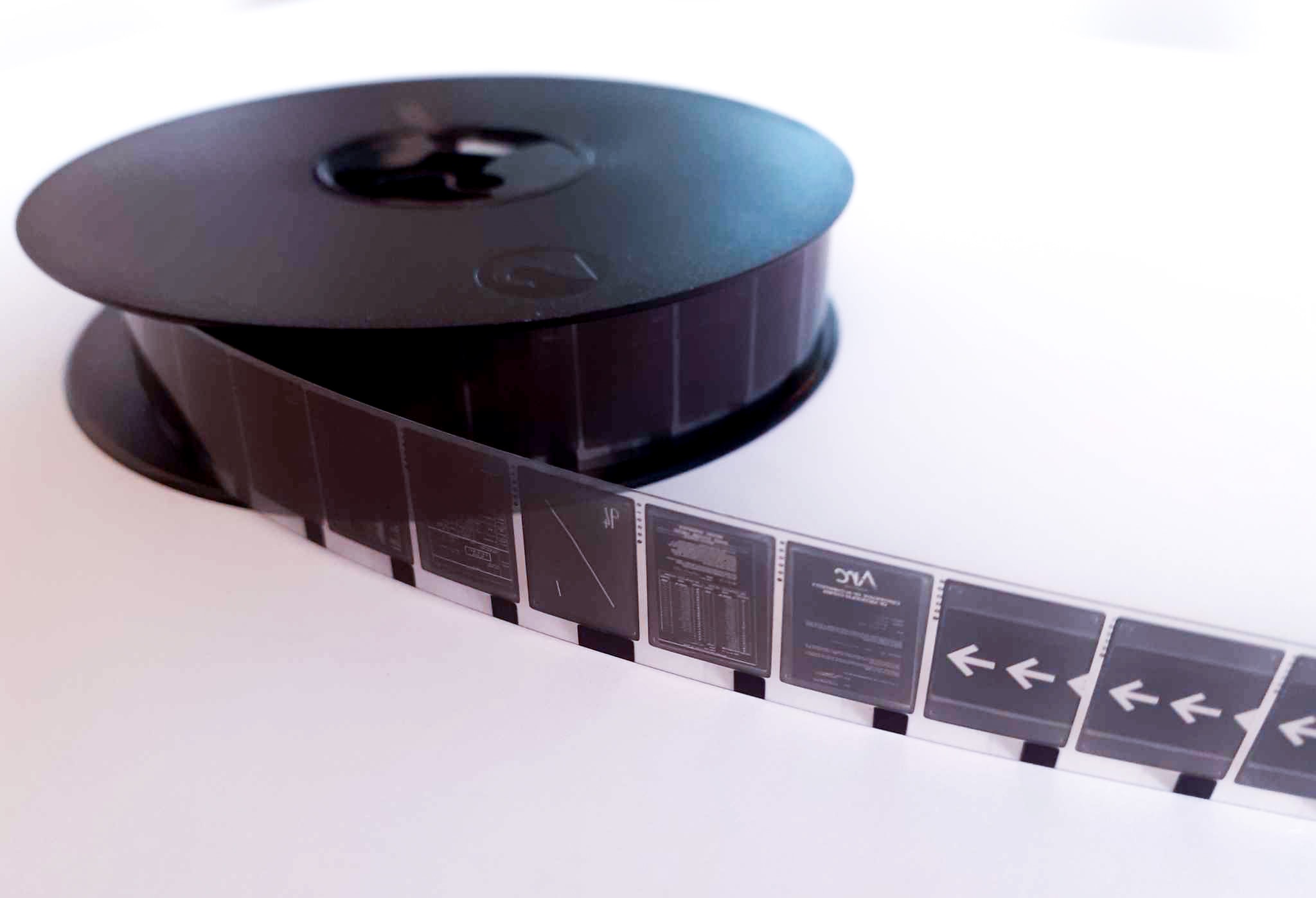Next up in our series reviewing the tools of the analogue world for digital natives is microfiche and microfilm, the flat sheets or rolls of microfilm used by institutions throughout the twentieth century for information storage. Read on as we clarify the difference between microfiche and microfilm, explain how both worked and consider whether the time is now ripe for a comeback!
Microfiche or microfilm?
Let’s start by clearing this one up with some definitions: both microfiche and microfilm are types of microform, storing photographic images of documentation too small to be visible to the human eye. The difference is in their format. Microfiche consists of flat sheets of microfilm, usually measuring around 10 x 15 cm, whereas microfilm is a long strip of 16mm or 35mm film, wound into a roll. Microfilm was created as early as the 19th century, hand in the hand with the wider development of photography, but it was not until the 1930s that it began to be used for commercial purposes. It is unclear precisely when the first microfiches were produced, but they seemed to be in widespread use by the 1960s.
Both can be produced as positive or negative images, although negatives are more common. And both can be viewed using a reader, using a magnifying lens to enlarge the images.
In the pre-internet world, both types of microform were used to store documentation and make it available to researchers and the general public, much as digitisation is used today. If you were conducting research into your family tree, for example, you would probably have consulted microforms of the public records in your local archives. Libraries often held archive copies of newspapers on microfilm, and universities used them to keep copies of PhD theses, since the amount of space needed to store them was much less that for the physical documents.
The ESA Archives holds some microfilms from industry in its Envisat technical documentation and master microfilm files, along with microfiches of ESA final contract reports and official blue-docs - you can see some examples in the slideshow below. We also have a microfiche reader that was capable of converting them into pdf files.
Conservation issues and user experience
However, the sad reality is that our reader is currently out of action, pending repair (and we suspect we are not the only institution with this problem!) This is an important issue and an interesting negative correlation too – as this equipment acquires ‘historical’ value, it becomes harder and harder to find the parts and the experts to carry out such repairs. And our preservation needs – and costs - grow from the safeguarding of the films themselves to ensuring the continued functioning of the machines needed to read them.
Of course, the film itself can also suffer damage. A wide range of defects can adversely affect the quality of the reproduction made from microfilm: scratches, holes in the emulsion or base, or finger marks being just a few. And over time, the film can deteriorate: the acetate-based microfilm in general use until the 1990s can break down when exposed to fluctuating temperatures, humidity, or pollutants. Where this happens, the film base degrades, generating acetic acid with its vinegar smell – known as ‘vinegar syndrome’.
And then there is the question of what users actually thought. A paper given at a 2003 conference organised by a working group of the International Council for Archives, on Microfilming and Digitization as Choices in Preservation, gave a damning verdict: “Basically no one likes using microfilm. Over the past weeks I discussed the theme of this conference with various people, and every time I heard how they hate microfilm. And, as a librarian once pointed out to me, to make matters worse, users of microfilm are often treated as outcasts and relegated to a bare, unpleasant corner of the library where they cannot disturb the other readers in their struggle with noisy machines.’’
The gold standard of the past!
Despite these issues, one of the great advantages of microforms is their long expected life – which according to the type of film can be anything from 100 up to 500 years. And, in fact, microforms were promoted as a unique, perennial format for preservation, and are still regarded by many archivists as a gold standard. We might enjoy the irony that these microforms are still with us, while different digital formats for media storage come and go frequently (how many of us have CDs and DVDs that we can no longer play in our homes?) And it is certainly interesting to rethink common assumptions about digital formats being the only way to conserve material for the future. Is it possible that we may one day return to analogue formats like microforms to future-proof our collections?

